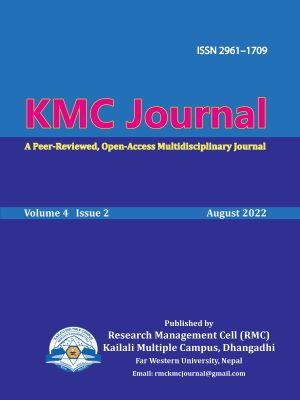Experiences of Teachers and Students in Multicultural Nepalese Classrooms
DOI:
https://doi.org/10.3126/kmcj.v4i2.47781Keywords:
Multicultural education, multicultural pedagogy, cultural diversity, cultural gapAbstract
This article explores the teachers’ behaviour and students’ experiences in multicultural classrooms in Nepal. Applying the phenomenological qualitative research design, we selected two schools from the study area that have a more diversified population. Data was collected through in-depth interviews with the teachers and students, and a focus group discussion with the students. We used a thematic data analysis procedure to analyze the data. This study found that the schools’ policies are unable to address the needs of culturally different children. The schools have focused on providing economic support to the students rather than addressing their cultural needs. We found that the traditional training packages for teachers were insufficient to deal with multicultural classrooms. Because of a lack of knowledge of cultural, language, and feelings of students’ and families’ background, teachers were unable to deal with the students properly. Although the teachers were sincere on cultural issues nowadays, at the beginning of their career, their practices were not child-friendly. At the same time, we found that the experiences of students were also disgraceful in the school related to culture and language. They had difficulties in classroom adjustment because of being a different culture, they had problems in proper pronunciation and tongue in the Nepali language.
Downloads
Downloads
Published
How to Cite
Issue
Section
License
Copyright (c) 2022 Prem Raj Bhandari, Hem Raj Dhakal

This work is licensed under a Creative Commons Attribution-NonCommercial 4.0 International License.
This license allows reusers to distribute, remix, adapt, and build upon the material in any medium or format for noncommercial purposes only, and only so long as attribution is given to the creator.




